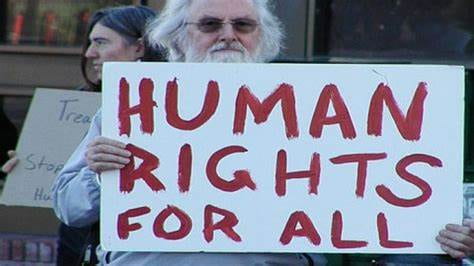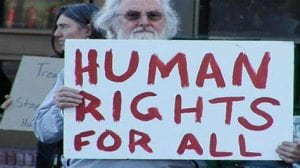At the second African Climate Summit, leaders discussed the role of Africa’s critical minerals in climate change and sustainable development. The African Union’s joint statement at the global COP30 climate summit highlighted the continent’s potential to be a climate leader, with its “abundant natural resources, […] young and dynamic workforce, and vast renewable energy potential.” This article examines Africa’s mineral industry, which could be key to the fight against the climate crisis.
Africa’s Minerals and Renewable Energy
The world is moving away from fossil fuels and towards clean energy, as renewables become the world’s dominant energy source. This is necessary to limit emissions and strive toward climate goals such as the Paris Agreement’s commitment to keeping the global temperature increase under 1.5°C above pre-industrial levels, but non-fossil fuel renewable energy alternatives also require the extraction of Earth’s natural resources.
As countries across the world push forward with the latest energy transition—the shift from traditional energy sources like coal and oil to renewable energy like wind and solar—Africa’s mineral deposits are increasingly critical to supplying the world’s energy. They store much of the world’s “transition minerals,” natural resources used in renewable technologies like lithium-ion batteries and solar panels. At the Africa Climate Summit 2025, the UN Economic Commissioner for Africa warned that there was the potential to “repeat the exploitative patterns of the past,” as the demand for the minerals used in renewable technologies increases.
The transition mineral industry is fraught with human rights abuses, notably labor rights violations and environmental injustices. Violations of the 23rd article of the Universal Declaration of Human Rights, which protects workers’ rights to favorable working conditions and living wages, are commonplace. The Democratic Republic of the Congo has been at the center of conversations regarding Africa’s mining industry, where conflict, illegal mining operations, and smuggling endanger the people who provide the minerals for the world’s technology.
Exploitation in the Democratic Republic of the Congo (DRC)
The Business and Human Rights Resource Centre tracked 178 cases of abuse from 2010-2024 in the transition mineral industry; mines in the DRC accounted for over half of these abuses. In a 2023 report, Amnesty International found that “multinational mining companies are forcibly evicting communities from their homes and farmlands in the name of energy transition mining” in the DRC. The exploitation present in the DRC is exacerbated by violent conflict, corporate irresponsibility, and the prevalence of illegal, dangerous operations.

Conflict Minerals in the DRC
Key to the conflict between the DRC government and the Rwanda-backed M23 rebel group has been control of valuable mines, like Rubaya’s coltan mine. Coltan is an ore that contains tantalum, which is used in the electric car batteries that are key to reducing fossil fuel reliance in transportation. In Rubaya, armed militants patrol impoverished workers, including children, who earn a meager wage to mine and transport coltan. A UN report revealed that a Rwandan exporter purchased coltan that was smuggled by militant groups in the DRC, funding the M23’s deadly offensive in the Eastern DRC. When minerals are used to finance and compound human rights abuses, they are called “conflict minerals.”
Conflict Minerals in the Corporate Supply Chain
Tesla, which uses tantalum in their products, outlines a “responsible materials policy” and explicitly states that it has made efforts to “eliminate from [their] value chain any benefits [their] sourcing of these materials may give to armed groups in the Democratic Republic of the Congo and its adjoining countries.” However, a Global Witness report details how smuggled minerals, like coltan from Rubaya, are sourced from unvalidated mines and “laundered,” ending up in the global supply chain. The report names Tesla as one of the companies potentially profiting from this system. The use of conflict minerals in consumer products is just one facet of the human rights implications of transition minerals. Another important aspect to consider is how these natural resources are obtained.

Unregulated Mining: Ramifications of Informal Operations
Illegal and informal mining operations also put people at risk. Artisanal and small-scale mining sites can expose miners to toxic chemicals like arsenic and cyanide, and the overcrowded conditions produce a high risk of infectious disease, among other dangers. Transition minerals like cobalt are among the resources obtained through artisanal and small-scale mining in the DRC. Harvard researcher Siddarth Kara, in a conversation with NPR, outlines the hazardous conditions, child labor, and corruption embedded in cobalt mining in the DRC. He calls the conditions “modern-day slavery.”
An Overview of Artisanal and Small-Scale Mining
The transition mineral industry is driving the use of illegal artisanal and small-scale mining operations in Africa. 10 million sub-Saharan Africans are artisanal and small-scale miners. Artisanal and small-scale mining is a diverse practice, mostly carried out by subsistence miners or small-scale industry, and some believe that artisanal and small-scale mining has the potential to provide critical minerals and drive economic development in Africa. However, it is a complex and controversial practice with consequences for labor and environmental rights.
Artisanal and small-scale mining can be driven by poverty and scarce employment opportunities. Other actors, like Chinese nationals, also participate in the practice, benefiting from what is often an illegal and unregulated system.
Unregulated artisanal and small-scale mining can threaten environmental health, which has downstream effects on human health. Artisanal and small-scale mining has been linked to water pollution, mercury contamination, and reduced water flow to nearby agriculture. Artisanal mining was responsible for high levels of mercury in crops, water, and the miners themselves in Ghana. Others criticize the practice for driving up the cost of living by displacing local activities like food production, thereby trapping workers in a cycle of poverty.

An Economically Sustainable and Human-Oriented Artisanal and Small-Scale Mining Sector
Despite challenges, the artisanal and small-scale mining sector has the potential to drive economic growth and provide a livelihood for millions of Africans. One proposed step toward a more equitable and community-focused artisanal and small-scale mining sector is formalizing the mining process in a way that does not simply issue more licenses but also considers environmental and social responsibility. A “livelihood-oriented formalization” can mean miners have a secure income rather than working for shelter, food, or a small share of profits; implementing worker safety principles can reduce accidents and limit the spread of communicable disease. Formalizing artisanal and small-scale mining should include a comprehensive reconsideration of the current processes, with the well-being of miners at the forefront.
Corporate and Government Responsibility
Transition mining involves small-scale operations, but large multinational corporations also play a significant role in determining how minerals are obtained. The role of corporate social responsibility in mitigating human rights abuses is controversial. Companies like Tesla, as mentioned before, have come under fire for being complicit in the sale of conflict minerals, and mining companies expel people from their homes. In recent years, multinational corporations have begun to consider themselves as part of the solution to human rights issues in Africa. Corporations that adopt rigorous due diligence standards can offset some of the failures of fragile governments, such as the DRC, in enforcing industry-wide rules.
Hope for an Equitable Transition Mineral Industry
Africa’s critical transition minerals will be vital to replacing fossil fuels that pollute the atmosphere and accelerate climate change. With an equitable structure, the mining industry has the potential to bring jobs and capital to Africa; however, the current prevailing model of unregulated and dangerous mines, conflict-sourced minerals, entrenched poverty, and chronic environmental damage is not sustainable or fair to the people who supply some of the world’s most valuable and necessary resources. In recent years, some legal progress has been made; Congolese miners have won cases against cobalt mining companies for wrongful termination, injury compensation, and union representation. Continuing these efforts could bring about a world powered by renewable energy that doesn’t sacrifice miners’ human rights.








